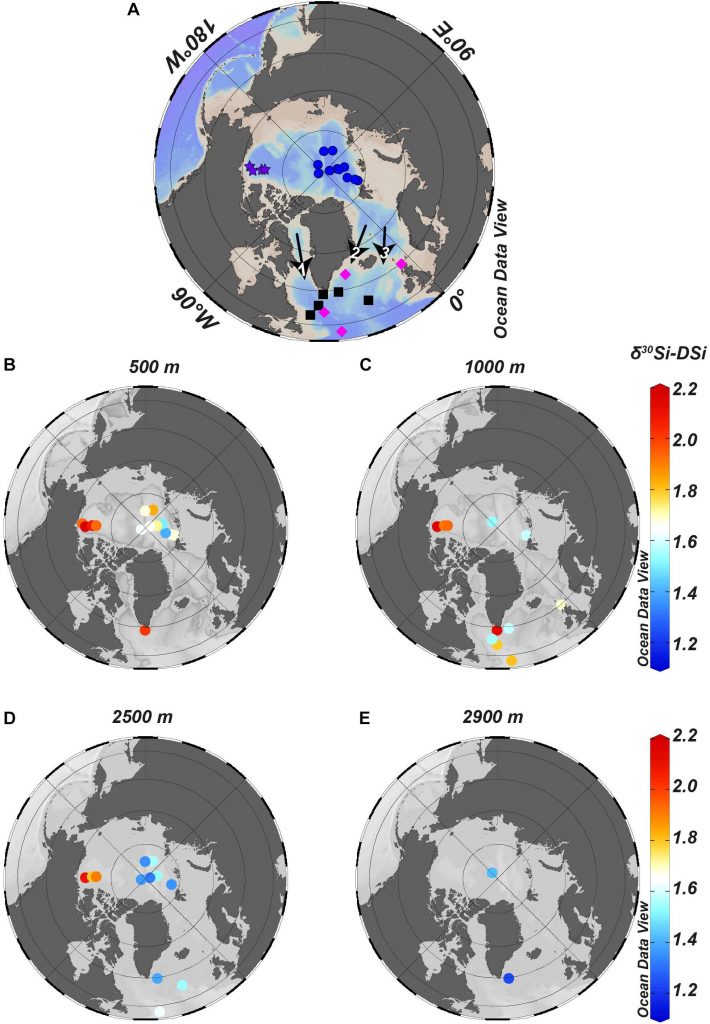Silicon isotopes reveal the different Arctic endmembers contributing to the deep water formed in the North Atlantic Ocean
Combining a multiparametric analysis, biogenic and dissolved silicon (Si) isotope data (30Si-bSiO2 and δ30Si-DSi, respectively) in the Arctic Ocean, Liguori and co-workers (2020, see reference below) could unravel the influence of water masses on the δ30Si-DSi distribution within the Arctic Ocean. Any deviation of the δ30Si-DSi signature from pure mixing was attributed to the contribution of biogenic particle dissolution. This is particularly true for the Dense Arctic Atlantic Waters which are dominating from 200 to 500 m water depth and are marked by the highest δ30Si-DSi, indicating a strong lateral influence of waters from the shelves, especially the Barents Sea shelf, due to its high productivity. Contrastingly, the deepest waters are not influenced by the dissolution of sinking bSiO2, probably due to the low concentration of bSiO2. The authors could thus establish that the Arctic Ocean potentially presents several isotopically different endmembers that contribute to the deep water formed in the North Atlantic Ocean.

References:
Liguori, B. T. P., Ehlert, C., & Pahnke, K. (2020). The Influence of Water Mass Mixing and Particle Dissolution on the Silicon Cycle in the Central Arctic Ocean. Frontiers in Marine Science, 7. DOI: https://doi.org/10.3389/fmars.2020.00202
de Souza, G. F., Reynolds, B. C., Rickli, J., Frank, M., Saito, M. A., Gerringa, L. J., et al. (2012). Southern Ocean control of silicon stable isotope distribution in the deep Atlantic Ocean. Glob. Biogeochem. Cycles 9, 4199-4213. DOI: https://doi.org/10.5194/bg-9-4199-2012
Sutton, J. N., Souza, G. F. D., Garcia-Ibiliez, M. I., and De La Rocha, C. L. (2018b). The silicon stable isotope distribution along the GEOVIDE section (GEOTRACES GA-01) of the North Atlantic Ocean. Biogeosciences 15, 5663–5676. DOI: https://doi.org/10.5194/bg-15-5663-2018
Varela, D. E., Brzezinski, M. A., Beucher, C. P., Jones, J. L., Giesbrecht, K. E., Lansard, B., et al. (2016). Heavy silicon isotopic composition of silicic acid and biogenic silica in Arctic waters over the Beaufort shelf and the Canada Basin. Glob. Biogeochem. Cycles 30, 804–824. DOI: https://doi.org/10.1002/2015gb005277
